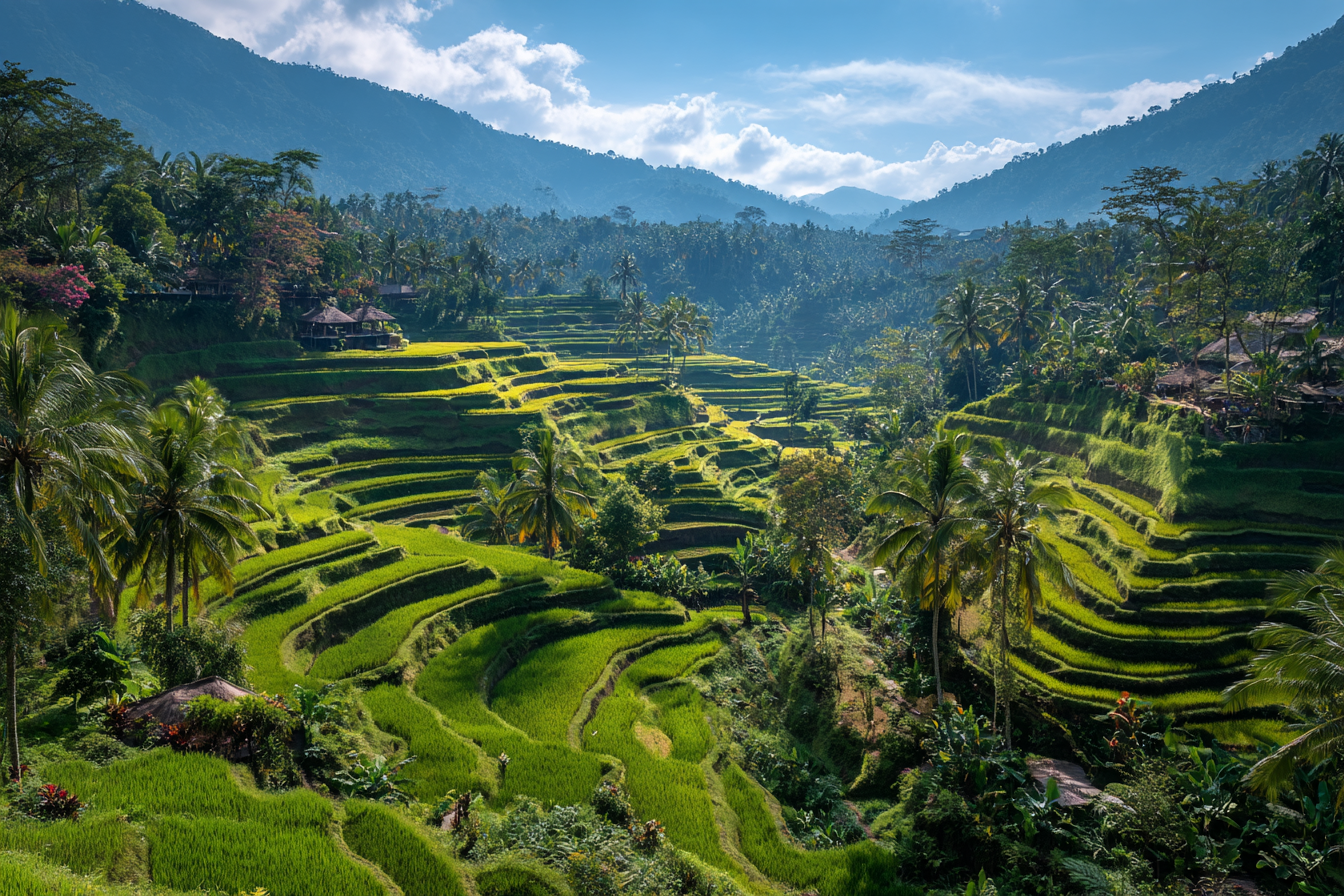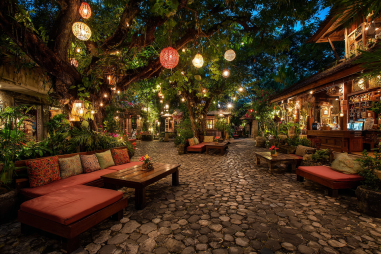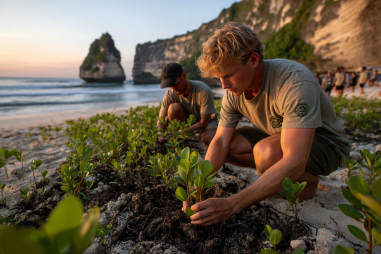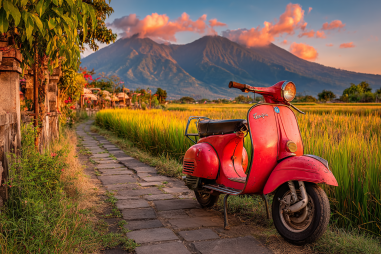Ubud, often regarded as the cultural heart of Bali, is famed not only for its arts and crafts but also for its verdant rice terraces that stitch the landscape into a breathtaking mosaic. These iconic terraces, perched on gently rolling hillsides, offer visitors a chance to immerse themselves in both the natural beauty and the rich traditions that have shaped Balinese life for centuries. Whether you are a nature lover, a culture enthusiast, or an avid photographer, exploring the Ubud rice terraces promises an unforgettable experience that captures the essence of Bali.
The History and Cultural Importance of Rice Farming in Ubud
Rice farming in Bali dates back thousands of years and remains deeply embedded in the island’s culture and spirituality. The rice terraces around Ubud exemplify the Balinese subak system, a traditional irrigation cooperative recognized by UNESCO as an intangible cultural heritage. This communal farming system doesn’t just serve the practical purpose of water distribution, but it also reflects the islanders’ philosophy of Tri Hita Karana, which emphasizes harmony between people, nature, and the spiritual realm.
Rice is more than food for the Balinese; it is considered a gift from the gods and plays a central role in religious rituals and ceremonies. The care and reverence given to rice cultivation illustrate a profound connection to the land and continuity of ancestral practices. Visitors walking through these terraces today are witnessing a living testament to sustainable agriculture that has supported generations.
Best Rice Terraces to Visit: Tegallalang and Beyond
While Ubud is surrounded by several spectacular rice terrace landscapes, the Tegallalang Rice Terrace is undoubtedly the most famous and frequently visited. Located just a few kilometers north of central Ubud, Tegallalang offers stunning panoramic views of layered green fields, often framed by traditional Balinese huts. It’s a fantastic spot for photography, with pathways winding through the terraces that allow visitors to walk alongside the farmers at work.
Other notable terraces include:
- Jatiluwih Rice Terraces: Though a bit further afield, Jatiluwih is a UNESCO World Heritage site renowned for its expansive fields stretching as far as the eye can see.
- Campuhan Ridge Walk area: Near Ubud town, this area offers modest but scenic terraces mixed with tropical greenery.
- Sidemen Valley: A quieter alternative to Tegallalang, Sidemen showcases lush terraces within a rural setting, perfect for those seeking a more tranquil experience.
Each site has its own unique charm, so exploring a few will enrich your understanding of Balinese agriculture and rural life.
Tips for Hiking and Photography in the Rice Terraces
Personal experience and timing can make all the difference when visiting the rice terraces. Here are some practical tips to enhance your visit:
- Visit early in the morning: The soft light at dawn provides perfect photographic conditions and fewer crowds.
- Wear appropriate footwear: Paths can be slippery and uneven, so sturdy walking shoes or hiking sandals are best.
- Respect the farmers’ land: Stick to marked paths, avoid trampling young rice plants, and ask permission before taking photos close to people.
- Bring water and sun protection: Though shaded in parts, the terraces can be exposed to intense sun.
- Capture details and panoramas: Don’t just take wide shots; zoom in on textures, water irrigation channels, and farming tools for variety.
A leisurely hike through the terraces can take from 1-3 hours depending on how far you venture and the pace you prefer.
The Local Communities and Their Traditional Practices
The people living in the rice-growing regions around Ubud are custodians of a way of life that balances agriculture, spirituality, and community cohesiveness. Their daily routines involve meticulous care of the terraces, chanting rituals to bless the fields, and cooperative work to maintain the irrigation channels. Visitors often find that locals are warm and willing to share stories or demonstrate traditional farming methods.
Many villages maintain age-old festivals celebrating the planting and harvesting seasons, often involving colorful ceremonies with offerings, dances, and temple gatherings. Attending or witnessing one of these events offers profound insight into the spiritual importance of rice farming beyond just its economic value.
Eco-Tourism and Sustainable Visits
With rising popularity, it’s crucial to support tourism practices that protect the environment and culture of Ubud’s rice terraces. Many local guides and tour operators now emphasize small group sizes, minimal environmental impact, and respectful interactions with the communities. Some initiatives encourage visitors to participate in rice planting or learn traditional crafts, which helps provide income that sustains local livelihoods without degrading the land.
When planning your visit:
- Choose eco-friendly tours and accommodations nearby
- Bring reusable water bottles and avoid single-use plastics
- Respect waste disposal rules and take all your litter
- Support local vendors who sell artisanal goods or traditional snacks
Tourism that honors sustainability ensures that these stunning landscapes remain vibrant and authentic for generations to come.
Nearby Cafes and Viewpoints to Relax and Enjoy the Scenery
After exploring the terraces, you’ll want a spot to relax and soak in the views. Around Tegallalang especially, a number of charming cafes and warungs (small eateries) offer traditional Balinese refreshments and coffee with terraces overlooking the endless green rice fields. Sipping Bali coffee while watching the clouds drift over the paddies is a peaceful way to end your visit.
Some popular viewpoints feature hanging bridges or small platforms built into the hillside, perfect for panoramic photos or quiet reflection. Visiting these spots at sunrise or sunset makes for magical experiences when colors transform the landscape into a living painting.
How to Include Ubud’s Rice Terraces in Your Itinerary
Ubud’s rice terraces can be easily incorporated into a day trip or an extended exploration of Bali’s cultural heart. Consider these options:
- Half-day tour: Start early from Ubud town, visit Tegallalang terraces, enjoy a local brunch, and perhaps stop by a nearby temple or market.
- Multi-day cultural immersion: Combine rice terrace visits with workshops on Balinese dance, cooking classes, and yoga sessions in Ubud.
- Hiking adventures: Use the terraces as starting points or destinations for trekking through rural villages and scenic valleys.
- Photography tours: Join guided groups focusing on capturing the best light and angles around the terraces.
Planning your trip with some flexibility allows you to absorb the qualities that make these terraces deeply special.
Recognizing Bali’s Agricultural Heritage Through Ubud’s Rice Terraces
The rice terraces around Ubud embody the harmonious blend of nature and culture that defines Bali. Walking among the emerald paddies, learning about ancient irrigation systems, and interacting with farming communities provide meaningful insights far beyond the visual spectacle. These terraces are living landscapes, nurtured by tradition, reverence, and collective effort, offering visitors a chance to appreciate the island’s agricultural heritage with fresh eyes.
Whether admired for their artistic beauty or valued as a symbol of sustainable living, the Ubud rice terraces remain one of Bali’s most treasured and inspiring features. Exploring them enriches any journey to this enchanting island and awakens a deeper connection to its enduring rhythms.







